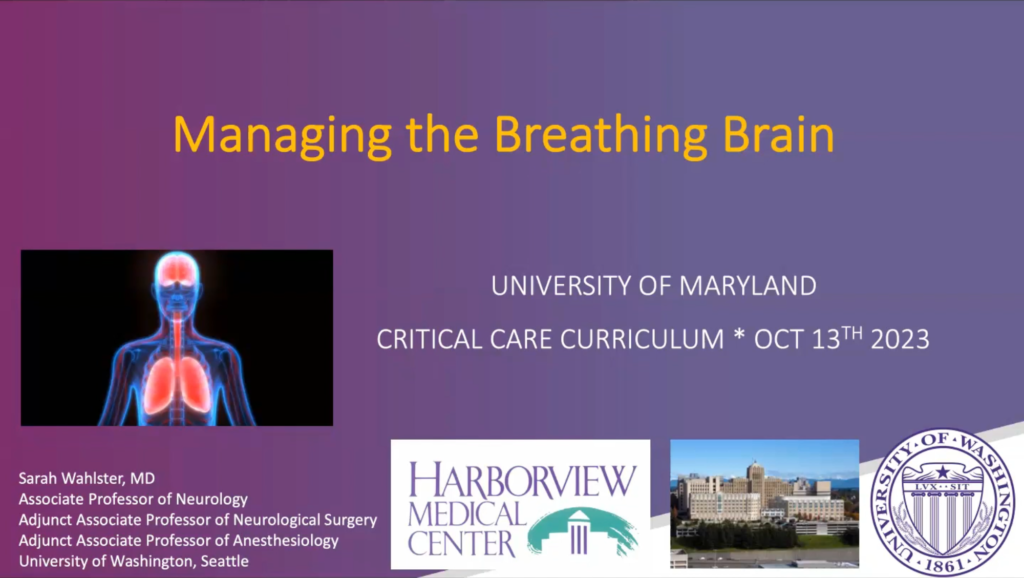Today we are fortunate to again welcome Joseph R. Shiber MD. Dr. Shiber is an Associate Professor of the Departments of Emergency Medicine and Surgical Critical Care; is the Co-Director of the Neuroscience ICU; and acts as a regular Intensivist in the SICU/TICU at the University of Florida College of Medicine. Today Dr. Shiber has been generous enough to travel all the way up to Baltimore in order to share just a taste of his immense knowledge on the devastating topic of traumatic brain injuries. This is a topic that you cannot miss if you ever plan to take care of critically injured patients!!
Clinical Pearls
(Summary assistance provided by Dr. Negar Naderi)
Epidemiology:
- Traumatic brain injuries (TBIs) are a leading cause of morbidity and mortality in trauma
- Bimodal age distribution of 15-24 year olds and >75 year olds
Types of Injury
- Extra-Axial
- Epidural Hematomas
- Usually middle meningeal arterial bleed (or bony bleeding in younger pts)
- Convex lens shaped on head CT with dura adhering to the skull
- 2/3 no significant brain damage
- Subdural Hemorrhage (SDH)
- Bridging veins and venous sinus bleeds
- Crescent shaped on T and bound by falx
- No midline crossing
- Isodense bleeding, often difficult to see with subacute bleeds or anemia
- Intra-Axial
- Subarachnoid Hemorrhage (SAH)
- Most common cause of bleed in TBIs
- Blood is in CSF spaces and in cisterns or sulci
- Important to distinguish between traumatic and spontaneous SAH
- Intracerebral Hematoma (ICH)
- Contusion of brain parenchyma usually in frontal, temporal or occipital poles
- Look for coup and contra coup injuries
- Diffuse Axonal Injury (DAI)
- Deceleration or rotational injury causing sheer injury to deep white mater causing axonal injury with diffuse tissue loss
- Usually diagnosed on MRI, can have normal CT
- Graded 1-3 with grade 3 leading to severe brain damage and poor prognosis
- Goal of treatment: Limit secondary injuries (hypoxia, hypotension, hyperthermia, hypo/hyperglycemia, edema, infection, hyponatremia)
- Subarachnoid Hemorrhage (SAH)
- Epidural Hematomas
Monitoring and Treatment
- Pressure Basics
- Intracranial volume can be expanded by 100 ml before an exponential rise in intracranial pressure
- Normal ICP is <10, sustained ICP>20 needs to be treated and ICP>40 is life-threatening
- Cerebral perfusion pressure (CPP)>60 is associated with decreased mortality
- Diagnosis and Treatment
- Cardiopulmonary resuscitation: single episode of hypotension increases mortality from 27 to 50%
- Beware of treating GCS as patients can start with GCS of 15 and rapidly decline and other factors i.e. alcohol can lower GCS in absence of TBI
- CT head in those with trauma + LOC or trauma + GCS of <14 for evaluation of blood/edema/air
- Management:
- Elevate HOB 15-30 degrees, neck straight, 1-week seizure prophylaxis for ICH or SDH
- Maintain normocarbia, MAP >75-80 (with pressors and fluids), PaO2>80, Hgb>8, PaO2>80, PbtO2>20 (Licox), Jugular ScVO2>60%
- Avoid hypoglycemia, hypotonic fluids, hyperthermia, heparin/LMWH
- EVD placement is the most accurate for ICP monitoring and can be therapeutic for draining CSF
- If ICP is elevated: mannitol, hypertonic saline or CSF drainage via EVD, consider sedatives and paralytics if hyperosmolar therapy fails
- Watch for dehydration s/p mannitol use
- Only hyperventilate (PaCO2<30) during emergencies and for short periods, as hyperventilation can cause secondary injury
- Decompressive craniotomy: large space occupying lesions, depressed skull fractures, GSW
- For severe ICP elevations unresponsive to therapy: can decompress the downstream pressure gradient (laparotomy, thoracotomy) to lower ICP or induce a barbiturate coma to decrease metabolism
- Recent data for treatment modalities
- Hypothermia: mixed data, no benefit of any cooling below normothermia
- Progesterone: based on gender disparity to outcomes with TBI
- No difference in mortality or neurological outcomes, though may be time dependent benefit
- EPO: no improvement in neuro outcomes; mild improvement in mortality (p=0.07) though possibly thrombogenic
- >200 Clinical trials- no neuroprotective agents found
- Simvastatin, sulfonulureas, etc.
- Currently looking for a lab markers: S-100B, GFAP, MBP all correlate with TBI severity
- APRV used less analgesia/sedation than conventional MV
- Vasopressin gtt for CV support may induce DI due to hypothalamic suppression
- Wean slowly and watch UO!
Suggested Reading
- Andrews PJ, Sinclair HL, Rodriguez A, Harris BA, Battison CG, Rhodes JK, Murray GD; Eurotherm3235 Trial Collaborators. Hypothermia for Intracranial Hypertension after Traumatic Brain Injury. N Engl J Med. 2015 Dec 17;373(25):2403-12.[PubMed Link]
- Joseph B, Haider A, Rhee P. Traumatic brain injury advancements. Curr Opin Crit Care. 2015 Dec;21(6):506-11.[PubMed Link]


